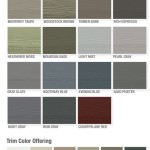Should You Paint the Exterior of Your House Yourself? A Comprehensive Guide
Maintaining the exterior of a house is crucial for both aesthetic appeal and structural integrity. A fresh coat of paint can dramatically improve curb appeal, protect against the elements, and even increase property value. However, the question homeowners often face is whether to undertake this significant project themselves or hire professional painters. A careful evaluation of the pros and cons is essential to making an informed decision.
The exterior painting of a house is a demanding undertaking that requires considerable time, effort, and skill. It is not merely about applying paint to a surface; it involves meticulous preparation, proper application techniques, and adherence to safety precautions. A poorly executed paint job can result in a substandard appearance, premature paint failure, and even damage to the underlying structure. Therefore, a thorough assessment of one's capabilities, resources, and the specific requirements of the house is paramount before embarking on a DIY exterior painting project.
Cost Savings and Budget Considerations
One of the most compelling reasons homeowners consider DIY exterior painting is the potential for significant cost savings. Labor costs typically account for a substantial portion of a professional painting quote, often exceeding the cost of the paint and materials themselves. By undertaking the project personally, homeowners can eliminate these labor expenses and potentially realize substantial savings. However, it is crucial to accurately estimate the total cost of the DIY project, factoring in all necessary materials, equipment rentals, and potential unforeseen expenses. A realistic budget should be established and adhered to throughout the project.
The cost of materials for a DIY exterior painting project can vary depending on the size of the house, the type of paint selected, and the condition of the existing surface. High-quality exterior paint, primer, caulk, brushes, rollers, and other necessary supplies can represent a significant investment. Additionally, specialized equipment such as ladders, scaffolding, and paint sprayers may need to be rented or purchased, further adding to the overall cost. It is important to research and compare prices from different suppliers to obtain the best possible deals. Seeking advice from paint professionals regarding the appropriate paint type and quantity required for the specific project can also help optimize material costs.
While the initial cost savings of a DIY project may seem appealing, it is also important to consider the potential long-term costs associated with poor execution. A poorly applied paint job can result in premature paint failure, requiring more frequent repainting and ultimately increasing the overall cost of ownership. Professional painters possess the knowledge and experience to properly prepare surfaces, apply paint evenly, and ensure proper adhesion, which can significantly extend the lifespan of the paint job and minimize the need for future repairs. Therefore, a comprehensive cost-benefit analysis should be conducted, weighing the upfront savings of a DIY project against the potential long-term costs of substandard workmanship.
Time Commitment and Physical Demands
Exterior painting is a time-consuming and physically demanding task that requires a significant commitment of time and energy. The amount of time required to complete the project will depend on the size of the house, the complexity of the design, and the condition of the existing surface. A typical exterior painting project can take several days or even weeks to complete, especially if extensive preparation work is required. Homeowners must carefully assess their availability and willingness to dedicate the necessary time to the project.
The physical demands of exterior painting can be considerable, involving prolonged periods of standing, bending, reaching, and climbing ladders. It is essential to be in good physical condition and to take appropriate precautions to prevent injuries. Proper lifting techniques should be employed to avoid back strain, and safety equipment such as safety glasses, gloves, and respirators should be worn to protect against chemical exposure and other hazards. Regular breaks should be taken to avoid fatigue and dehydration, especially during hot weather. Homeowners with pre-existing medical conditions or physical limitations should carefully consider their ability to handle the physical demands of the project before attempting to paint the exterior of their house themselves.
The time commitment and physical demands of exterior painting can also impact other aspects of a homeowner's life. Weekends and evenings may need to be dedicated to the project, potentially sacrificing leisure time and other activities. Family members may need to assist with the project, which can put a strain on relationships. It is important to carefully consider the potential impact on one's personal life before embarking on a DIY exterior painting project. Hiring professional painters can alleviate these demands, allowing homeowners to focus on other priorities and enjoy their free time.
Skill Level and Technical Expertise
Successful exterior painting requires a certain level of skill and technical expertise. It is not simply about applying paint to a surface; it involves a thorough understanding of surface preparation techniques, paint application methods, and safety procedures. Homeowners must assess their own skill level and technical expertise before attempting to paint the exterior of their house themselves. It is important to be realistic about one's abilities and to recognize that a poorly executed paint job can be more costly and time-consuming to correct than hiring a professional painter in the first place.
Surface preparation is a critical step in the exterior painting process. It involves cleaning the surface, removing loose paint, repairing any damage, and applying primer. Proper surface preparation ensures that the paint adheres properly and provides a long-lasting finish. Homeowners must be familiar with different surface preparation techniques and be able to identify and address any potential problems, such as mildew, rot, or peeling paint. Specialized tools and equipment may be required for surface preparation, such as power washers, scrapers, and sanding blocks. Without proper surface preparation, the paint job is likely to fail prematurely, resulting in peeling, cracking, and other unsightly problems.
Paint application techniques also play a crucial role in the success of an exterior painting project. Different types of paint require different application methods. Some paints are best applied with a brush, while others are better suited for a roller or sprayer. It is important to understand the proper techniques for each application method and to practice them before beginning the project. Applying paint too thickly or too thinly can result in uneven coverage, drips, and other imperfections. Professional painters have years of experience and training in paint application techniques, allowing them to achieve a smooth, even, and professional-looking finish. Homeowners who lack the necessary skills and experience may struggle to achieve the same results.
Safety Considerations and Risk Mitigation
Exterior painting can involve a number of safety hazards, including falls from ladders, exposure to chemicals, and electrical shock. It is essential to take appropriate safety precautions to minimize these risks. Ladders should be properly positioned and secured to prevent falls. Safety glasses, gloves, and respirators should be worn to protect against chemical exposure. Electrical outlets and wires should be covered or turned off to prevent electrical shock. Homeowners must be aware of the potential hazards and take steps to mitigate them.
Working at heights is a common aspect of exterior painting, and it poses a significant risk of falls. Ladders should be inspected for damage before each use and should be placed on a stable, level surface. The ladder should be angled properly and secured at the top and bottom to prevent it from slipping. When working on a ladder, it is important to maintain three points of contact at all times. This means keeping two hands and one foot or two feet and one hand on the ladder. Reaching too far to the side can cause the ladder to become unstable and tip over. If the area to be painted is difficult to reach with a ladder, scaffolding may be a safer option. However, scaffolding should be properly erected and inspected to ensure that it is stable and secure.
Many exterior paints contain chemicals that can be harmful if inhaled or absorbed through the skin. It is important to wear appropriate safety gear when working with paint, including safety glasses, gloves, and a respirator. The respirator should be properly fitted to prevent the inhalation of paint fumes. Paints should be stored in a well-ventilated area, and spills should be cleaned up immediately. If paint comes into contact with the skin, it should be washed off with soap and water. If paint fumes are inhaled, fresh air should be sought immediately. In severe cases of chemical exposure, medical attention may be necessary.
Before starting the project, it's vital to check local regulations regarding exterior painting, including any permits required, restrictions on paint types, and environmental considerations. Failure to comply with these regulations can result in fines or project delays.
Ultimately, the decision of whether to paint the exterior of a house oneself is a personal one that depends on a variety of factors. A careful evaluation of the costs, time commitment, skill level, and safety considerations is essential to making an informed decision. While DIY exterior painting can offer significant cost savings, it also requires a substantial investment of time, effort, and expertise. If homeowners are unsure about their abilities or are concerned about the risks involved, hiring professional painters may be the best option.

Should I Paint My House Myself Or Hire A Professional Painter

How To Paint A House Exterior By Yourself Ricciardi Brothers
Exterior House Painting Rules You Should Never Break

Should I Paint My House Myself A Comprehensive Guide Matt The Painter

How To Paint Your House Exterior Step By Forbes Home

Should I Paint My House Myself A Comprehensive Guide Matt The Painter

How Often Should I Paint The Exterior Of My House Woodiwiss Painting

4 Reasons To Paint Your Home Exterior Certapro Painters

We Painted The Exterior Of Our House Within Grove

Should I Paint My House Exterior Myself Or Hire A Professional In Kansas City H M Precision Painting
Related Posts








